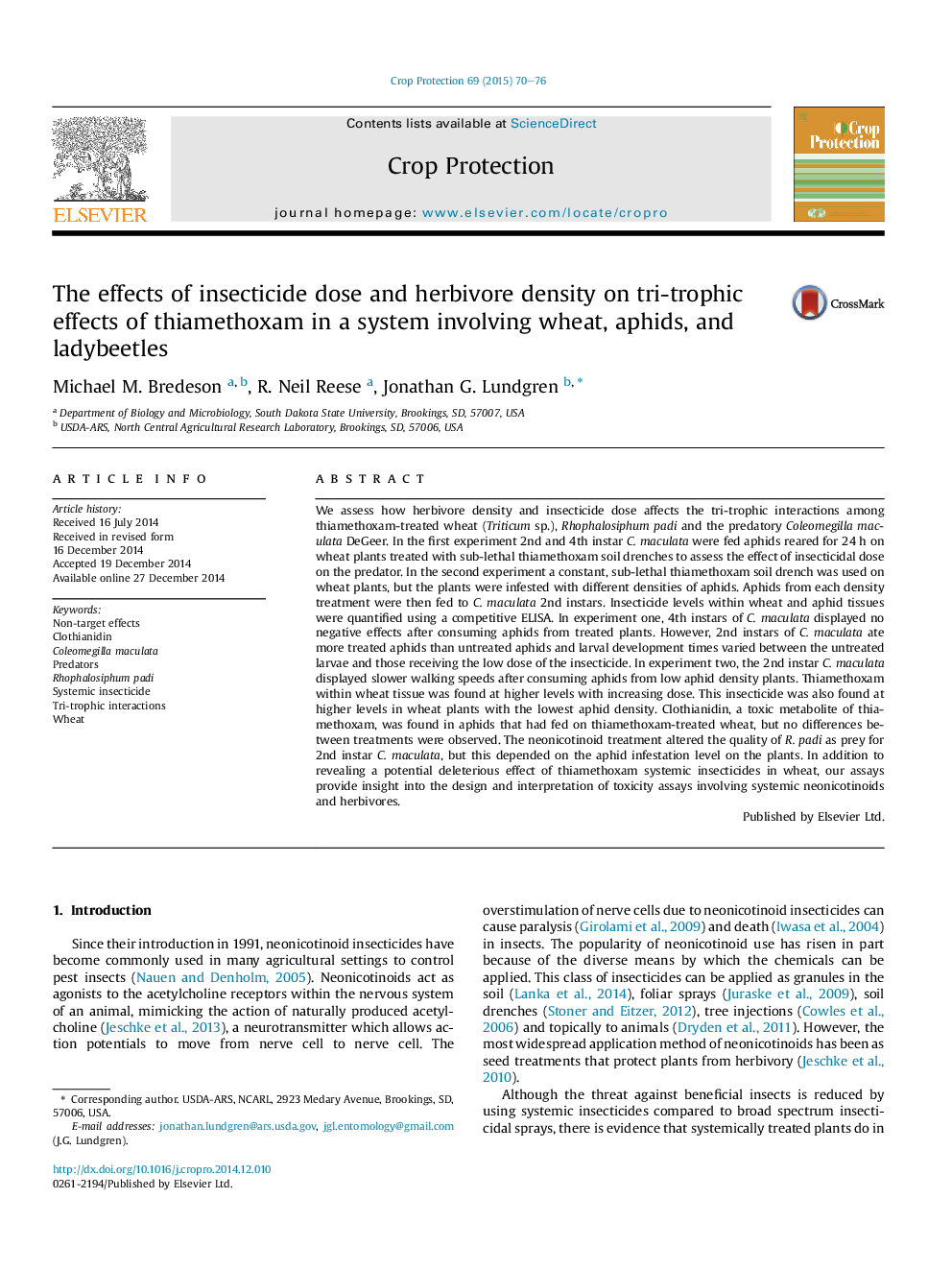| Article ID | Journal | Published Year | Pages | File Type |
|---|---|---|---|---|
| 4505851 | Crop Protection | 2015 | 7 Pages |
•Thiamethoxam in wheat plants affected Coleomegilla maculata fitness via aphid prey.•Increasing aphid densities reduced the thiamethoxam titer found in wheat.•Clothianidin was found in aphids fed wheat treated with thiamethoxam.
We assess how herbivore density and insecticide dose affects the tri-trophic interactions among thiamethoxam-treated wheat (Triticum sp.), Rhophalosiphum padi and the predatory Coleomegilla maculata DeGeer. In the first experiment 2nd and 4th instar C. maculata were fed aphids reared for 24 h on wheat plants treated with sub-lethal thiamethoxam soil drenches to assess the effect of insecticidal dose on the predator. In the second experiment a constant, sub-lethal thiamethoxam soil drench was used on wheat plants, but the plants were infested with different densities of aphids. Aphids from each density treatment were then fed to C. maculata 2nd instars. Insecticide levels within wheat and aphid tissues were quantified using a competitive ELISA. In experiment one, 4th instars of C. maculata displayed no negative effects after consuming aphids from treated plants. However, 2nd instars of C. maculata ate more treated aphids than untreated aphids and larval development times varied between the untreated larvae and those receiving the low dose of the insecticide. In experiment two, the 2nd instar C. maculata displayed slower walking speeds after consuming aphids from low aphid density plants. Thiamethoxam within wheat tissue was found at higher levels with increasing dose. This insecticide was also found at higher levels in wheat plants with the lowest aphid density. Clothianidin, a toxic metabolite of thiamethoxam, was found in aphids that had fed on thiamethoxam-treated wheat, but no differences between treatments were observed. The neonicotinoid treatment altered the quality of R. padi as prey for 2nd instar C. maculata, but this depended on the aphid infestation level on the plants. In addition to revealing a potential deleterious effect of thiamethoxam systemic insecticides in wheat, our assays provide insight into the design and interpretation of toxicity assays involving systemic neonicotinoids and herbivores.
